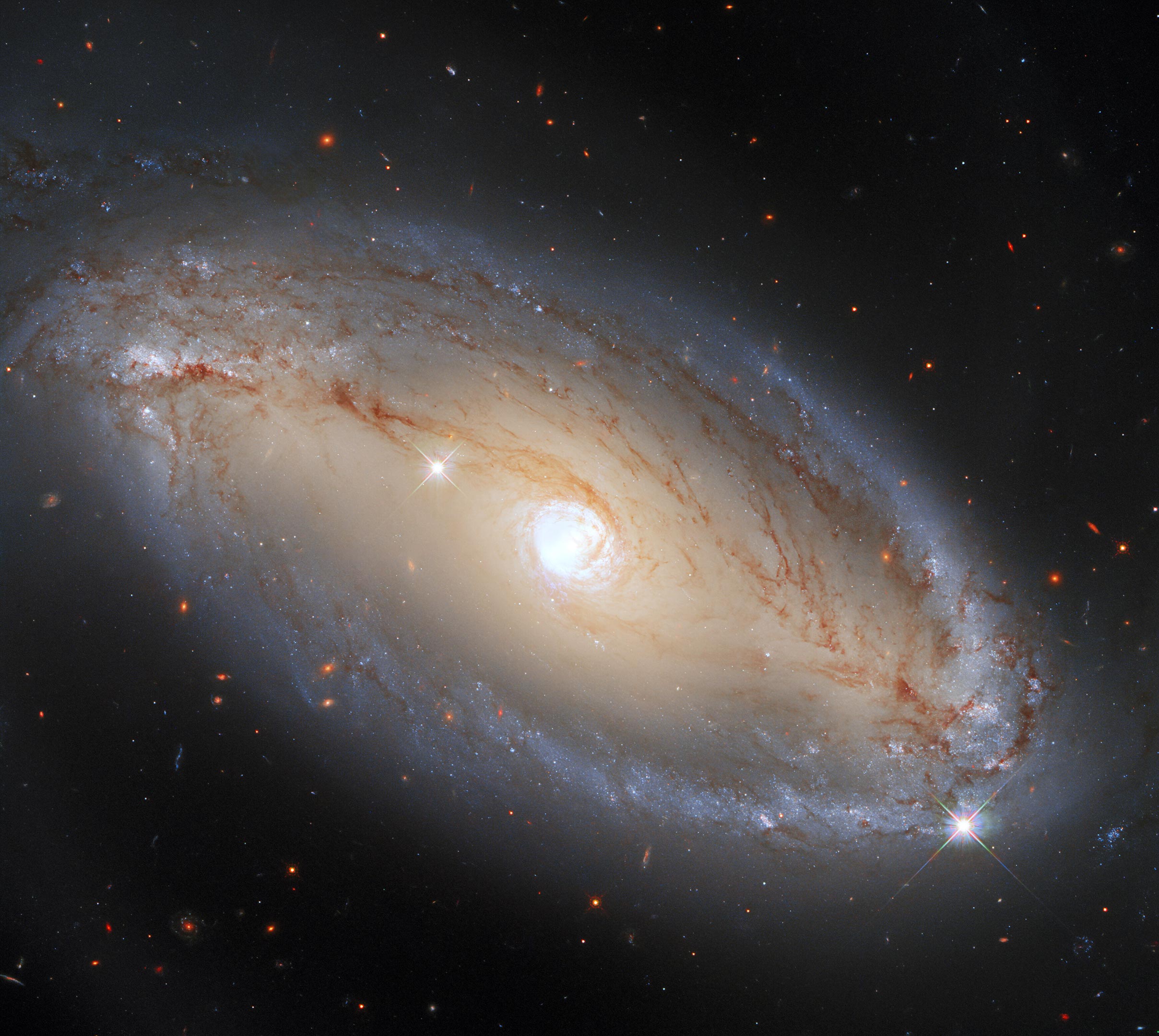With the sheer number of streaming-on-demand services available, trying to watch all the best and biggest new shows and movies has become a bit of a mess.
None of the technology companies that have tried to streamline content discovery and subscriptions – including Apple, Google, and Amazon – have found a perfect solution.
Hubbl, a new all-in-one streaming platform from Foxtel – though it doesn’t bear any Foxtel branding whatsoever – hasn’t come up with a perfect solution either. However, it is unique and might appeal to those who just want the goods with an absolute minimum messing around.

The $100 Hubbl puck brings the same software as the Hubbl Glass to your own TV.
Launching on March 10, Hubbl comes in two flavours: a $100 puck that resembles a horizontal slice taken off an Apple TV, and a fully-featured television called Hubbl Glass, which costs either $1595 or $1995, for a 55-inch or 65-inch model, respectively. Either way, the core promise is the same: subscribe and unsubscribe from any app as you like, with everything appearing on a single bill if you like, and all of it (plus free-to-air and catch-up) presented on one cohesive home screen with a cross-platform list of things to watch.
It sounds like a dream, but Hubbl isn’t quite there yet. For example, Netflix content doesn’t show up mixed in with other shows in the curated lists; you can only find it in Netflix branded areas.
Stan (operated by the owner of this masthead) and Paramount+ aren’t available, but Hubbl says they’re coming, and most smaller streamers don’t get a look in.
Netflix, Disney, Prime, Apple and others exist in their own siloed apps, with their own watch lists, though all except Netflix have their content liberally mixed into the Hubbl home screen’s themed lists. Only the Foxtel-affiliated Binge and Kayo, live TV, and Foxtel’s subscription Lifestyle channels are fully integrated. This doesn’t mean the whole experience falls apart, just that you need to adapt to a certain way of doing things.
The Hubbl remote (which is impressively bulky, in opposition to TV industry trends) has a big plus button on it, and the idea is that you press it any time you see something you want to watch, and it’s added to your list. Except once you enter a non-Foxtel app it doesn’t do anything. So, if there’s a show you would like to watch on Netflix, and you want it on your Hubbl list instead of your Netflix list, you need to search for it from the Hubbl home screen, then use the plus button.

Hubbl’s lists, such as the “trending” and “TV guide” items seen here, mix live TV, catch-up and streaming apps.
The slightly tortured streamlining is common to systems that try to pool everything together, like Google or Fetch TV. Still, Hubbl does a better job than most at trying to highlight new content from all sources, rather than just the stuff from the company that owns it.
The Netflix-style motion posters you see when the device is idle are quite equitable, even promoting new episodes of big shows from free-to-air. Although, if you only subscribe to one of the many premium offerings, that could get a bit annoying.
Compared to Hubbl, Apple TV, Fetch Mini and Amazon Fire Cube all also offer cross-app search and have access to more apps, but they’re more expensive at around $200.
The Fetch Mighty, which is more than $300, also has a hard drive for recording broadcast TV. Only the Fetch and Hubbl options have a plug for your terrestrial antenna, which is handy, and helps Hubbl stand out as an easy all-in-one at a low price.

Hubbl Glass is bulky compared to other TVs, with the larger model coming in at 35kg, but it has a built-in 3.1.2 sound system.
Similarly, the Hubbl Glass represents great value for anyone wanting a new 4K TV, smart software features and good sound all in one sleek package. Coming in at less than $2000, it offers great picture quality compared to the mid-range Samsung and Sony LCDs you’d get for the same price, and you likely won’t need an additional soundbar or extra speakers, given the Glass’ hefty in-built sound. You don’t need any kind of additional set-top box either, since the Hubbl is built-in.
Loading
Like an iPhone or a Samsung Galaxy, Hubbl Glass comes in an array of colours: Anthracite Black, Ocean Blue, Racing Green, Dusky Pink, and Ceramic White.
Built-in Dolby Vision and HDR 10 mean that 4K shows like Shogun and True Detective: Night Country pop off the screen, and the Glass is also always listening, meaning you can say “OK Hubbl” at any time, and it will play whatever you ask it to. This is a feature that, thankfully, you can switch off. The remote has a microphone button you can hold to search with your voice instead.
The Glass – like the set-top box – is still somewhat of a work in progress, and we can expect additional features to be added over time. For example, while plugging in a Playstation works (and looks great), the Glass doesn’t recognise it as Playstation like other TVs do, instead merely labelling it as HDMI1.
Some of the limitations might also frustrate more demanding users: you’re unable to “cast” or stream content from your phone or laptop, for example – a feature available on most other smart TVs – and while it features three HDMI 2.1 ports, it doesn’t have a high refresh rate like others in its price class. We also found the Amazon Fire Stick didn’t quite fit into the space afforded for the Glass’ HDMI port. Then again, more discerning TV tech-heads will probably opt for the Hubbl puck on their own TV.
Overall, everything about the Hubbl Glass has been built with simplicity in mind, making it a compelling choice for anyone overwhelmed by the multitude of streaming options available, and anyone just wanting a good value TV without worrying about bits and bobs to go with it.
Get news and reviews on technology, gadgets and gaming in our Technology newsletter every Friday. Sign up here.
Most Viewed in Technology
Loading
Note: This article have been indexed to our site. We do not claim legitimacy, ownership or copyright of any of the content above. To see the article at original source Click Here












